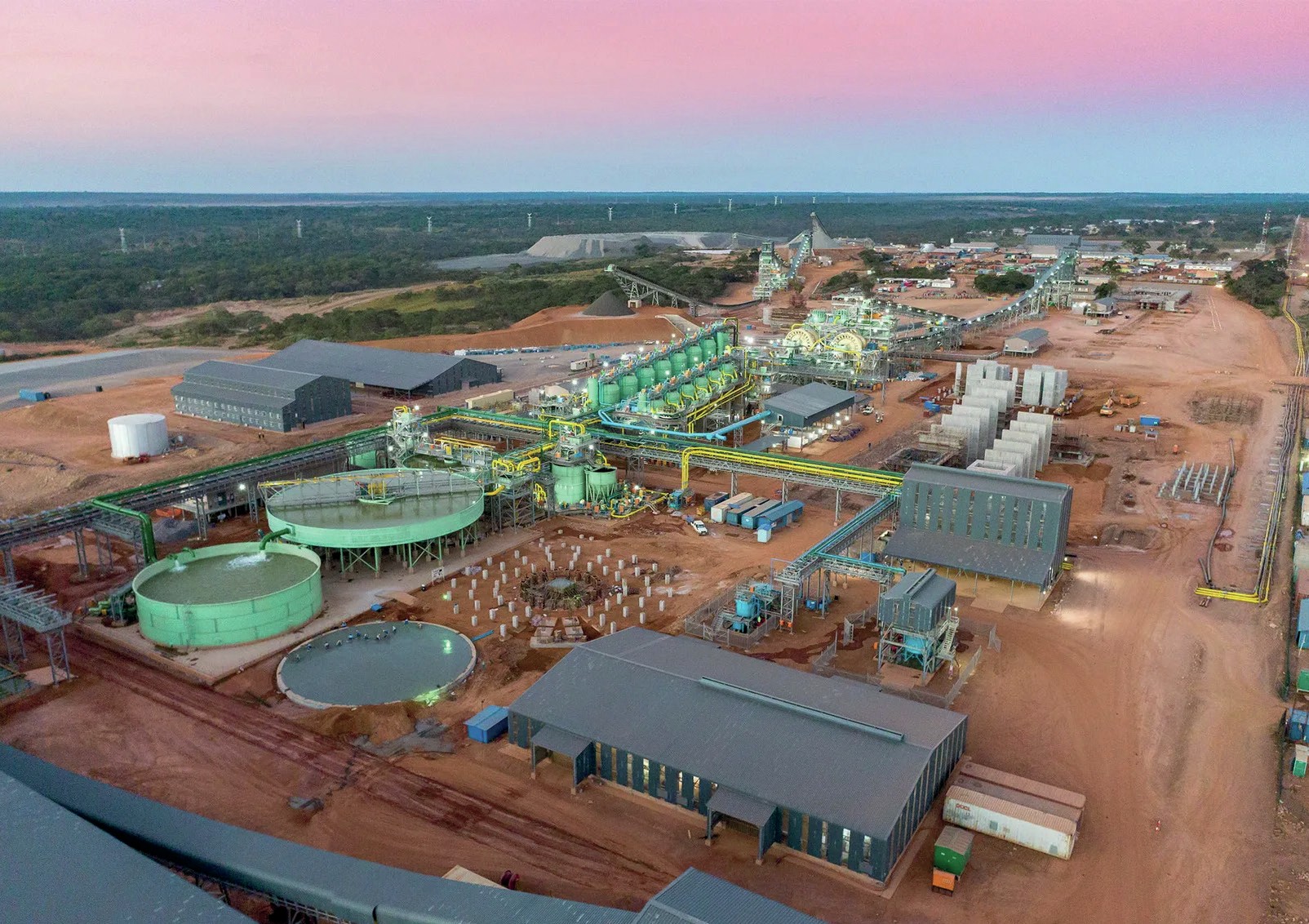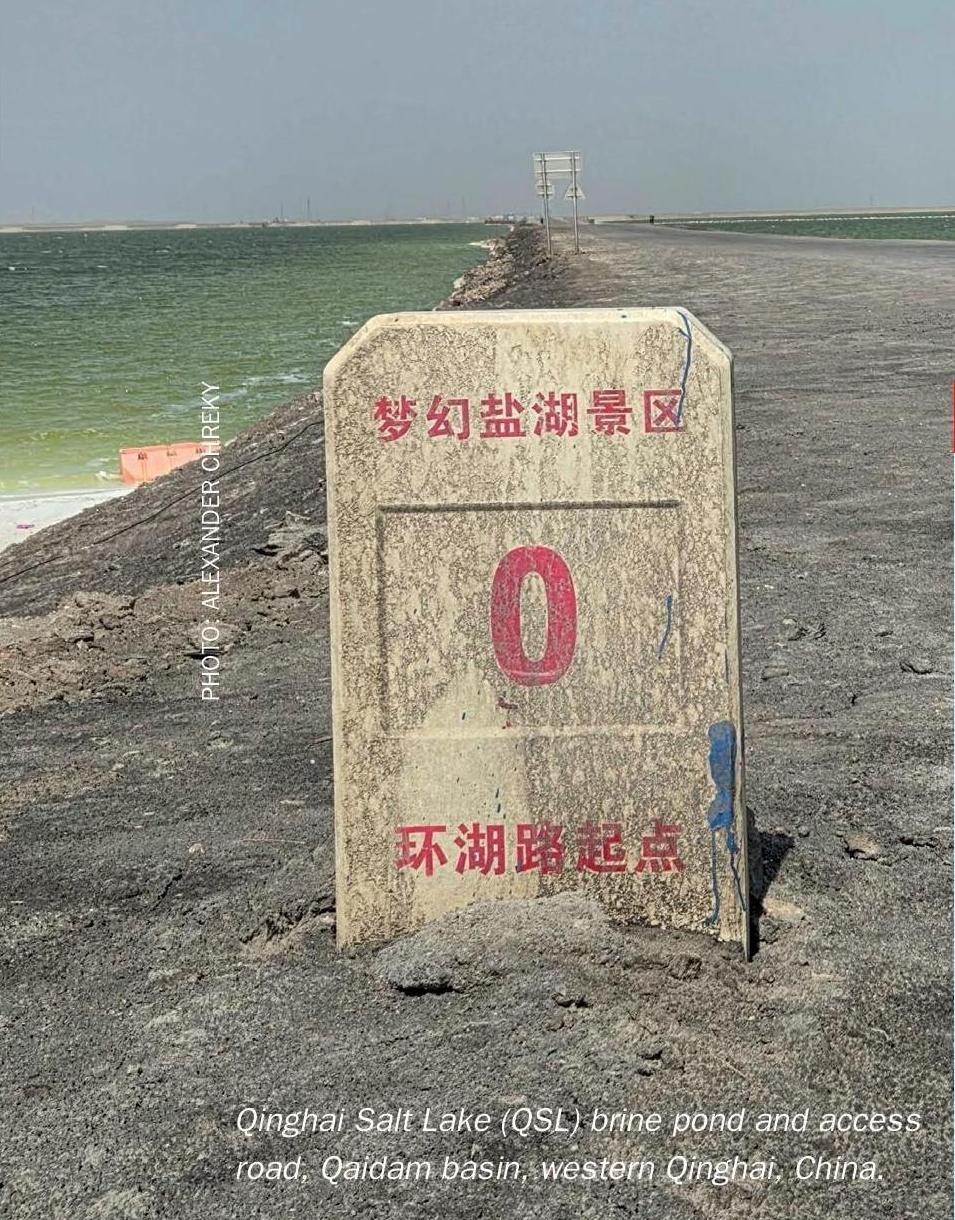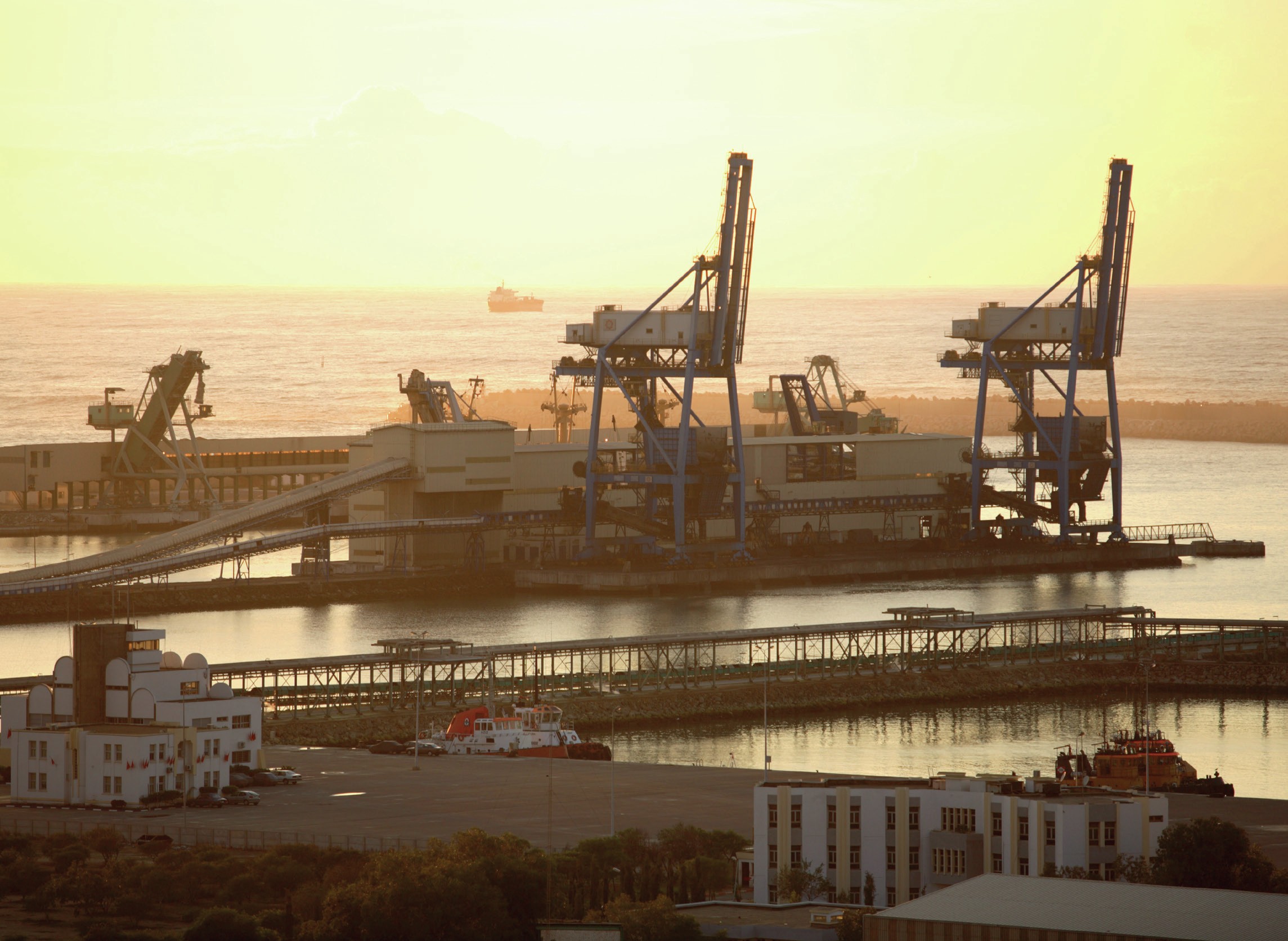Fertilizer International 503 Jul-Aug 2021
31 July 2021
Fertilizer Industry News Roundup
Fertilizer Industry News
KENYA
African renewable power-to-fertilizer plant
Preliminary engineering work has started on a renewable powerto-fertilizer plant in Kenya.
The plant is being built by three Maire Tecnimont subsidiary companies – MET Development, Stamicarbon and NextChem – at the Oserian Two lakes Industrial Park, near Lake Naivasha, 100 kilometres north of the capital Nairobi. It will have the capacity to produce 550 t/d of calcium ammonium nitrate (CAN) and/ or NPK fertilizers, as required.
According to Maire Tecnimont, the plant will support low-carbon growth in Kenya and boost the country’s agricultural output by providing fertilizers for local smallholder farmers and communities. It is expected to create over one hundred direct jobs in the Lake Naivasha region.
The project’s announcement in May coincided with Stamicarbon’s launch of its new Stami Green Ammonia Technology package. This will eliminate carbon from fertilizer manufacturing and promote sustainable and green production by substituting renewable resources for fossil fuels.
Stamicarbon is providing both its new Stami Green Ammonia technology and existing nitric acid technology as an integrated package for this innovative, first-of-its-kind fertilizer plant. The pioneering small-scale Kenyan project will also be modular in construction and design.
NextChem plans to start the front-end engineering design (FEED) on the project by the end of this year. MET Development is also setting up a development consortium for the project currently with local and international partners. The ultimate aim is to finish the plant and start commercial production in 2025.
The production plant, which is located next to Kenya’s largest geothermal energy basin, will require around 70 MW of renewable power. It will also be partly powered by on-site solar electricity generation. Switching to production based on renewable power is expected to cut carbon emissions by 100,000 t/a, compared to an equivalent gas-based fertilizer plant.
On completion, the plant’s fertilizer output should reduce Kenya’s import dependency on nitrogen fertilizers by around 25 percent, as well as improving fertilizer affordability domestically.
Pierroberto Folgiero, Maire Tecnimont’s CEO, said: “We are very pleased to announce the start of this exciting project… with a pioneering player such as Oserian Development Company. We aim to unlock the potential of decarbonising the fertilizer industry using renewable energy as a feedstock. Kenya has a unique potential to provide renewable energy, making it an ideal location for local green power-to-fertilizer production, replacing imports of nitrogen fertilizer.”
Folgiero added: “With this very promising initiative, we confirm our expertise in project development in green energy, by acting as an end-to-end developer and technological integrator capable of connecting the key factors which are necessary to industrialize the green economy globally”.
Stami Green Ammonia Technology is the outcome of an exclusive cooperation deal by Stamicarbon to commercialise the small-scale ammonia technology package offered by Argentina-based Raybite S.R.L. The agreement means that Stamicarbon is now an ammonia technology licensor for small-scale plants. This new capability for ammonia adds to and complements its existing urea and nitric acid technology portfolio.
As well as being suitable for new builds, Stami Green Ammonia Technology can be installed at currently operating plants as a hybrid solution to help make existing fertilizer production more sustainable. Fertilizer producers will have the choice of using the technology in combination with either urea and/or nitrate fertilizer production.
“The world is demanding accelerated cooperative climate action to reduce emissions and Stamicarbon is determined to be part of the solution,” said Pejman Djavdan, Stamicarbon’s managing director. “Our new Stami Green Ammonia Technology plots a clear course towards green fertilizer production from nature’s elements – solar, wind energy, hydrogen from water – instead of fossil fuels and nitrogen from the air. It represents a significant leap forward for sustainability within the fertilizer industry, while also offering exciting opportunities for collaboration between the fertilizer and energy markets.”
The technology condenses ammonia without the need for a large dedicated refrigeration compressor. This should improve plant reliability and deliver substantial capex savings. Four plants are currently operating with this innovative, small-scale technology, in addition to the newly-announced renewable power-to-fertilizer plant in Kenya.
RUSSIA
Shchekinoazot partners with Stamicarbon on sustainability
Russian chemical company Shchekinoazot and Stamicarbon are collaborating on sustainable fertilizer production.
In a memorandum signed in May, the two companies have agreed to “jointly explore, develop and implement green technologies at Shchekinoazot’s existing and new enterprises in the Russian Federation, with the common goal to contribute to sustainable fertilizer production”, Stamicarbon said in a statement. Both parties have pledged to assist one another in the development and commercialisation of green technologies.
Installing sustainable technologies at Shchekinoazot’s urea and other fertilizer plants in Russia will be the main priority. These could potentially include Stamicarbon’s Ultra-Low Energy technology, MicroMist™ Venturi Scrubbing systems and its new Stami Green Ammonia technology (see above).
Pejman Djavdan, CEO of Stamicarbon, said: “We are committed to the development of technologies for green fertilizers, decreasing the environmental footprint of fertilizer production and use. In partnership with Shchekinoazot, I’m sure we will greatly contribute to the implementation of these new technologies and intensification of sustainable agriculture.”
Pierroberto Folgiero, the CEO of Stamicarbon’s parent company Maire Tecnimont, added: “Stamicarbon is at the forefront of innovation in the fertilizer industry, and as such it is best positioned and equipped to set the pace for the development of technologies to support the energy transition. I am glad that an industry leader such as Shchekinoazot has selected Stamicarbon as the partner of choice to industrialize sustainable fertilizer production.”
Boris Sokol, Shchekinoazot’s president, also welcomed the new partnership: “We attach greater importance to environmental issues, by minimizing our environmental impact, reducing the carbon footprint of our activities and taking care of the local environment. The signed memorandum will allow us to take another step towards state-of-the-art technologies and approaches aimed at the preservation of natural diversity and a healthy planet for future generations.”
UNITED ARAB EMIRATES
Abu Dhabi to build blue and green ammonia plants
ADNOC is pursuing plans to build a large-scale ‘blue’ ammonia plant at its Ruwais complex in Abu Dhabi.
Blue ammonia combines the conventional manufacture of ammonia from natural gas with carbon capture and storage. ADNOC’s one million t/a capacity project, which has now moved to the design phase, will be located at the new Ta’zizz industrial and chemicals hub at Ruwais. Wood Group has been engaged to perform the pre frontend engineering and design (FEED) work for the blue ammonia plant.
ADNOC is already a major regional hydrogen and ammonia manufacturer, producing more than 300,000 t/a of hydrogen at its Ruwais complex.
The new project is part of ADNOCs’ strategic move into the hydrogen-based economy and hydrogen infrastructure. In November 2020, the United Arab Emirates’ Supreme Petroleum Council gave ADNOC the mandate to pursue opportunities in hydrogen and hydrogen carrier fuels, including blue ammonia, with the aim of positioning the UAE as a market leader. ADNOC has moved swiftly to sign a number of provisional hydrogen supply agreements with potential customers in recent months.
The construction of a green ammonia production plant at the Khalifa Industrial Zone in Abu Dhabi (KIZAD) has also been announced. This project will generate hydrogen from solar power for sale into both regional and international markets.
Once completed, the project will produce 200,000 t/a of green ammonia from 40,000 t/a of green hydrogen. Helios Industry, a privately-owned investment company, will invest more than $1 billion in the plant’s construction over several years, according to KIZAD.
CANADA
BHP delays Jansen final investment decision
Australian mining giant BHP has put back the final investment decision (FID) for its partially completed Jansen mine project.
An announcement on whether to fully implement the potash mega project, located in Canada’s Saskatchewan province, had been expected mid-year. However, the decision has now been postponed while the company reviews two potential port options. BHP says it will firstly decide which port to choose “in the coming few months”, Reuters reported, before taking the Jansen project to its board for the longawaited FID.
“We are considering two options in terms of the port. One is a commercial option at the port of Vancouver, one is a greenfield option,” said Ragnar Udd, president of BHP Minerals America. “We would like to have those locked in before we take them to the board.”
BHP has yet to fully commit to completing construction of the Jansen project. This is despite having already invested $4.5 billion sinking two mine shafts to a depth of 1,000 metres.
If approved, turning Jansen into a fully functioning 4.4 million tonne capacity potash mine, under the project’s first phase of development, is expected to cost a further $5.7 billion. Given the current uncertainty over its future, Jansen is unlikely to enter production and start adding to global potash supply until 2026 or 2027 at the earliest.
The announcement of a delay in the final investment go-ahead for Jansen followed news that BHP, the world’s biggest miner, was in talks with Canadian fertilizer giant Nutrien about a potential partnership for the massive Saskatchewan potash project.
Reuters reported in May that the two companies were discussing two options. These included Nutrien either becoming Jansen’s operator – and selling the potash through its existing channels – or taking an investment stake in the mine to help fund its completion. However, these discussions have not been officially commented on or verified by either company.
Nevertheless, a BHP-Nutrien deal could help create greater price certainty for major potash producers, according to analysts. “[It] keeps new tonnes marketed within the existing global structure,” Bloomberg Intelligence analyst Jason Miner told Reuters. “A potential Nutrien deal could lift the cloud BHP’s Jansen mine has long cast over this market.”
Nutrien has been a vocal critical of the Jansen project previously, warning that its development could flood the market with excess potash. Chuck Magro, Nutrien’s previous CEO, said last year that building a new potash mine did not make economic sense and that the Jansen project would be a “sure-fire way to destroy shareholder value”.
New incoming CEO Mayo Schmidt, in contrast, has struck a more emollient tone. He has stated that future rises in potash demand should be able to soak up new large-scale supply sources like Jansen, if producer discipline was maintained.
“I think… they [BHP] are a disciplined organisation that operates around the world as we [do] – and we approach these markets in a thoughtful way,” Schmidt said recently. “We really think that the growth in [potash] demand is going to take up any … disciplined approach to the market.”
He added: “We see [demand] growth of about 2 to 3 percent over the next ten years. So if you do the math on that, it is about 14 to 23 million metric tonnes of additional demand over the course of the next ten years.”
BHP’s leadership still views potash as potentially integral to its future business plans.
“We continue to like potash. We think the long-term demand and supply fundamentals for potash are attractive,” BHP’s CEO Mike Henry told a conference in May. “We’ve always said we’re open to partnering, but the project doesn’t need a partner to proceed.”
New sulphur-enhanced urea plant
Northern Nutrients has started constructing a sulphur-enhanced urea plant at its premises in Saskatoon, Saskatchewan.
The plant will use Shell’s proprietary Thiogro process to incorporate micronised elemental sulphur into urea. Construction began in July with completion expected early next year. The plant’s production capacity was not disclosed.
Northern Nutrients is co-owned by Ross Guenther, the company’s president, and Matt and Rob Owens of Saskatchewan-based Emerge Ag Solutions. The company has been importing sulphur-enhanced urea for several years and widely distributing this to retailers in Western Canada. The new production plant will provide Northern Nutrients with the capability to produce this product domestically from next year.
“The adoption of the product and the anticipated increasing demand has convinced us to manufacture our own form of the sulphur-enhanced urea in Canada,” said Ross Guenther.
Matt Owens added: “We first tried the sulphur product three years ago, and all our growers who have tried it have increased their acres and moved all of their sulphur requirements over to the Shell micronized sulphur urea product. They like the product (11-0-0-75) because it is readily available to the plant early and throughout the growing season, it mixes well in any dry blend, and it has a low salt index compared to other forms of sulphur.”
Rob Owens was excited to be bringing sulphur-enhanced urea to dealers and farmers in the west of Canada. “The lower salt index is important in our area, and I also like that it is much less dusty than ammonium sulphate,” he said.
Curtis Bowditch, a farmer from Tisdale, Saskatchewan, has been using the sulphur-enhanced urea for three years. He was also enthusiastic: “The seed safety of the product was a game changer for our farm and allows us to get both our phosphorus and sulphur in the seed-row for the first time. Logistically it was a huge time saver.”
AZERBAIJAN
New Caspian Sea fertilizer terminal
The port of Baku in Azerbaijan has started constructing a new fertilizer terminal at Alat on the Caspian Sea.
The strategic terminal is being jointly financed by the port and the government of Azerbaijan. It is expected to be commissioned by the end of 2022. The port authority plans to lease the terminal and is currently negotiating with potential bidders over a long-term concession.
The new terminal will have the capacity to handle 2.5 million t/a of fertilizers and includes two warehouses with a total capacity of 60,000 tonnes. It will also incorporate state-of-the-art conveyor systems to load/unload fertilizers directly to warehouses or into rail hoppers at a newly designed wagon loading station.
The investment decision and go-ahead for the project came after a feasibility study revealed significant potential for transhipment of fertilizers from landlocked Central Asian countries to western markets via Azerbaijan.
Three Central Asia states – Turkmenistan, Uzbekistan and Kazakhstan – all generate high volumes of fertilizers from large scale production plants. The three countries have a combined annual production capacity in excess of 6.6 million tonnes for commodities such as urea, sulphur and potassium carbonate. This includes the recently inaugurated Garabogaz fertilizer plant on the eastern shore of the Caspian Sea in Turkmenistan. Garabogaz alone produces 1.2 million t/a of urea, with more than 90 percent of this output intended for export.
“The volume of Central Asian – primarily Turkmen – fertilizers transshipped via the port of Baku has increased more than 13-fold between 2018 and 2020, from 48,339 tonnes to 630,000 tonnes – and the trend is accelerating,” said Taleh Ziyadov, the port of Baku’s director-general. “In the first 5 months of 2021, we handled more than 450,000 tonnes of fertilizers. A new terminal will ensure reliability in Central Asia’s fertilizer supply chain and allow us to increase volume from Turkmenistan, Kazakhstan and Uzbekistan.”
AFRICA
Acron develops NPKs for the African market
Russia’s Acron Group has developed four new complex NPKs tailored for cereal crops grown in West and East Africa
The new formulations (23-10-5+S+Mg+Zn, 23-9-6+S+Ca+Mg+B, 22-20+S+Ca+Zn, and 20-10-10+S) are perfectly suited for growing most cereals in the region, according to Acron, particularly maize, wheat, and barley.
The new NPKs were developed following a comprehensive review of African farming methods. They are being manufactured at Acron’s Veliky Novgorod site in Russia. The company has already shipped more than 25,000 tonnes of the new formulations to countries in the region, as of the end of April.
Acron’s NPK fertilisers are designed to release nutrients quickly to the soil, despite the arid African climate, ensuring excellent crop yields. The new NPKs provide balanced nutrition by offering additional secondary nutrients (calcium, magnesium, and sulphur) alongside micronutrients (zinc and boron). They also have minimal effects on soil acidity, an important consideration in many African countries where soil acidity is already high.
Dmitry Khabrat, Acron’s overseas vice president, linked Acron’s product development process with changing African farming practices and increasing demand.
“As farming methods in Africa evolve, and Acron’s product portfolio expands, we will continue to develop new brands of complex fertilisers to meet highly specific local demand,” Khabrat said. “Our company has supplied products to the African market for many years and I believe that – as new complex fertiliser brands with extra nutrients and microelements emerge – we will expand our sales geography on both coasts of the African continent.”
WORLD
Dry bulk freight rates surge
Freight rates for dry bulk fertilizers have continued their year-long upwards surge, hitting new heights in the last week of June.
The average freight rate for fertilizers jumped to $48.34/t, Argus reported in late June, a rise of $3.50/t in one week. The Argus average rate is based on a basket of 19 selected fertilizers. These are spread across major shipping routes for urea, phosphates, NPKs, potash and sulphur.
The average freight rate has almost doubled since the start of 2021, Argus noted, having increased by $23.95/t. Rates have, in fact, been rising since the middle of 2020, more than reversing the slide of the previous six months. They continued to surge throughout 2021’s first-quarter, driven upwards by factors such as improving global trade, iron ore demand in China and icy conditions in Baltic ports, according to Argus.
Rates subsequently dipped in mid-March, then stabilised in mid-April, before rallying again to new highs in June. Grain exports from Latin America and the US Gulf have propped up Atlantic rates. East of Suez, demand from northern China for Australian iron ore shipments has also pushed rates higher, suggested Argus, in combination with coal-vessel fixings and increased bunker fuel prices.






